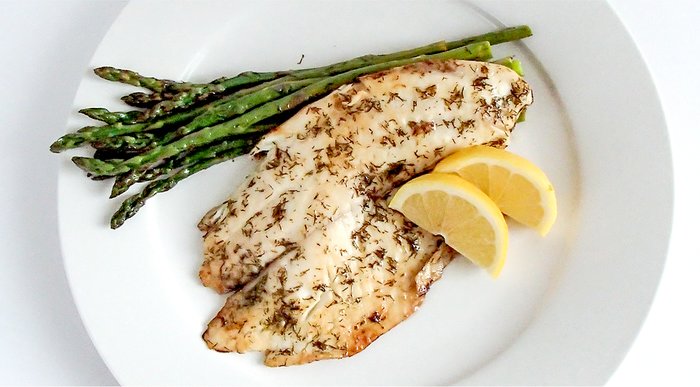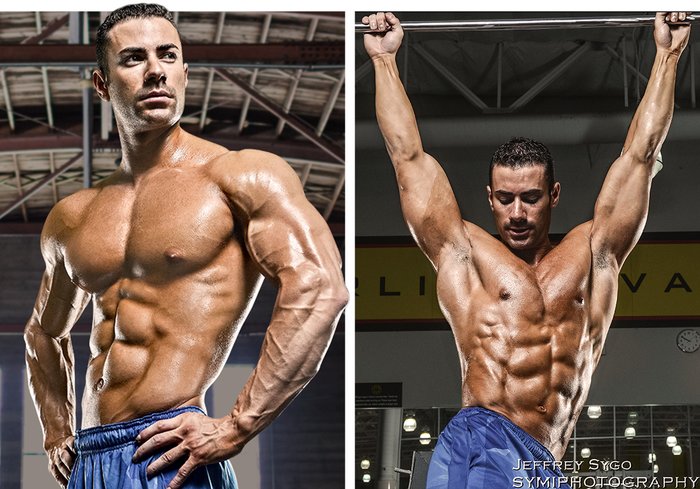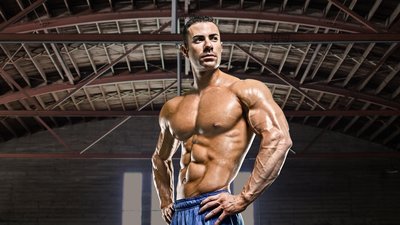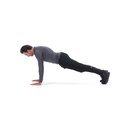Ancient Greeks and Romans viewed visible abs as a symbol of health, strength, and physical fitness. Statues of Zeus, Poseidon, and Heracles are complete with perfect six-packs—a nod to the immortal perfection and strength of the gods.
In today's Internet culture, having a great torso may not be supernatural, but it still evokes the same symbol of prestige. Who didn't run immediately to the gym after watching the movie "300?" I know I did.
As awesome as having a six-pack is, building one is not easy. If you've been crunching away after every workout and are still not seeing results, you're probably committing one or more of these mistakes. Here are six reasons you're not seeing etched abdominals, and what to do about them!
1. You Have Too Much Body Fat Covering Your Abdominal Wall
Strong abs aren't the most important component of a visible six-pack; low body fat is. If you have too much subcutaneous body fat covering your abdominal area, then no matter how many hours of crunches or leg raises you do, you won't be able to see your six-pack.
The most effective action toward achieving those ripped abs is to clean up your diet. When it comes to your abs, training can only get you so far. You need a smart meal plan to lower your body fat percentage and uncover your abs; otherwise, all your hard work in the gym will count for naught. So put down that Taco Bell quesadilla and make a healthier choice. Try some of our tasty, healthy recipes!

You need a smart meal plan to lower your body fat and uncover your abs.
2. Your Abdominal Exercises Aren't Diverse
Most people see abs as the little hard boxes in the middle of their torso, but the muscle system is actually far more complex. Your abdominal wall is built of the rectus abdominus (the six-pack), internal and external obliques that run along the sides of your rectus abdominus, and the transverse abdominus which lies beneath the internal oblique. I also like to include the serratus anterior because, if you can see the muscles on the top of your rib cage, you look like a bodybuilder.
These muscles help the torso flex, extend, and rotate. Most importantly, the muscles also help the torso stay stable against flexion, extension, and rotation. If you only train them to flex by doing endless crunches, you won't activate each of the muscles in ways in which they can grow. Like any other muscle in the body, the abdominals need to be trained from various angles and dimensions so they can really pop!
To better address your midsection, vary your exercises so you work each of the ways your abdominal wall functions. Try planks, suitcase deadlifts, and dead bugs.
Here’s an example of an ab workout comprising diverse exercises:

BodyFit
$6.99/month- 2,500+ expert-created single workouts
- 3,500+ how-to exercise videos
- Detailed workout instruction
- Step-by-step workout tips
- Training at gym or at home
- Access to Workout Plans
- Access to Bodyfit App
- Store Discounts
Already have a Bodybuilding.com account with BodyFit? Sign In

What comes with BodyFit?

- Instructional Videos
Don't risk doing a workout improperly! Avoid injury and keep your form in check with in-depth instructional videos.

- How-to Images
View our enormous library of workout photos and see exactly how each exercise should be done before you give it a shot.

- Step-by-Step Instructions
Quickly read through our step-by-step directions to ensure you're doing each workout correctly the first time, every time.
3. You Aren't Training Heavy Enough
Lately, there has been this weird hype that your abs need to be trained with a ridiculously high amounts of reps. Some people go crazy and do more than 500 reps in a workout. If you are training your abs for a high-endurance, abdominal-specific sport, then rep away. To get your abs to grow, however, you need to stimulate them just like any other muscle group in your body. Would you perform 500 reps of biceps curls in one workout for maximum growth? Probably not.
Start training your abs with some weight so they can develop like your other muscle groups, and vary the rep ranges each time you train them. For instance, in one workout, perform all bodyweight exercises with a rep range of 15-30; during your next abdominal training day, lower the rep range to 8-12 and use a heavier resistance by adding a plate to your floor-based moves or knocking out some cable crunches. Increase the difficulty as you progress.
4. You Try To Crunch Away The Fat
Let me be clear: You cannot lose body fat in specific areas of your body by training that body part more often. If someone ever tells you that you'll lose your gut by performing abdominal exercises, slap that person in the face and then explain to him or her that it's impossible to control where body fat comes off your body. The only way to strip the fat from your abs is by slowly and gradually burning it off from your entire body through cardio, nutrition, and resistance training.
Unfortunately, abdominal fat is usually the last bit to come off and the first to come back. The tenacity with which abdominal fat wants to cling to your belly can make dieting and exercise discouraging. The key is consistency. It may take months or even years to uncover your abs, but if you stick to being smart in the kitchen, you'll eventually see results.

The only way to strip the fat from your abs is by slowly and gradually burning it off from your entire body through cardio, nutrition, and resistance training.
5. You Train Your Abs Every Day
This is a touchy subject because many fitness and physique athletes do train their abs every day at the end of their workouts. However, they've been building their abs for years, and what works for fitness professionals may not always be the best approach for you.
Because you actually activate your abs doing many other exercises like squats, deadlifts, military presses, etc., it's best to give your core a break during the week. Even though you might not be directly training your abs, they still get stimulation during your compound lifts.
For best results, do direct abdominal training 2-3 times per week. As your abs evolve and get stronger, you can shorten the duration of your abs workout and include them in your workouts every other day.
6. You Frequently Change Your Diet
Many, many people go through crash diets and pre-contest nutrition plans in order for their abs to show. However, once they're done with their contest season or diet, they start eating junk food, stop performing cardio, and say goodbye to their six-packs. Say goodbye to crash diets, "dirty bulking," and nutritional inconsistency instead.
Like I said before, consistency is the most important piece of the six-pack puzzle. You need to make fitness a lifestyle. If you consistently eat clean and stay intense in the gym, you'll have abs for much longer than a few weeks. Being lean year-round means you can snap all the selfies you want—even if it's not contest season!





